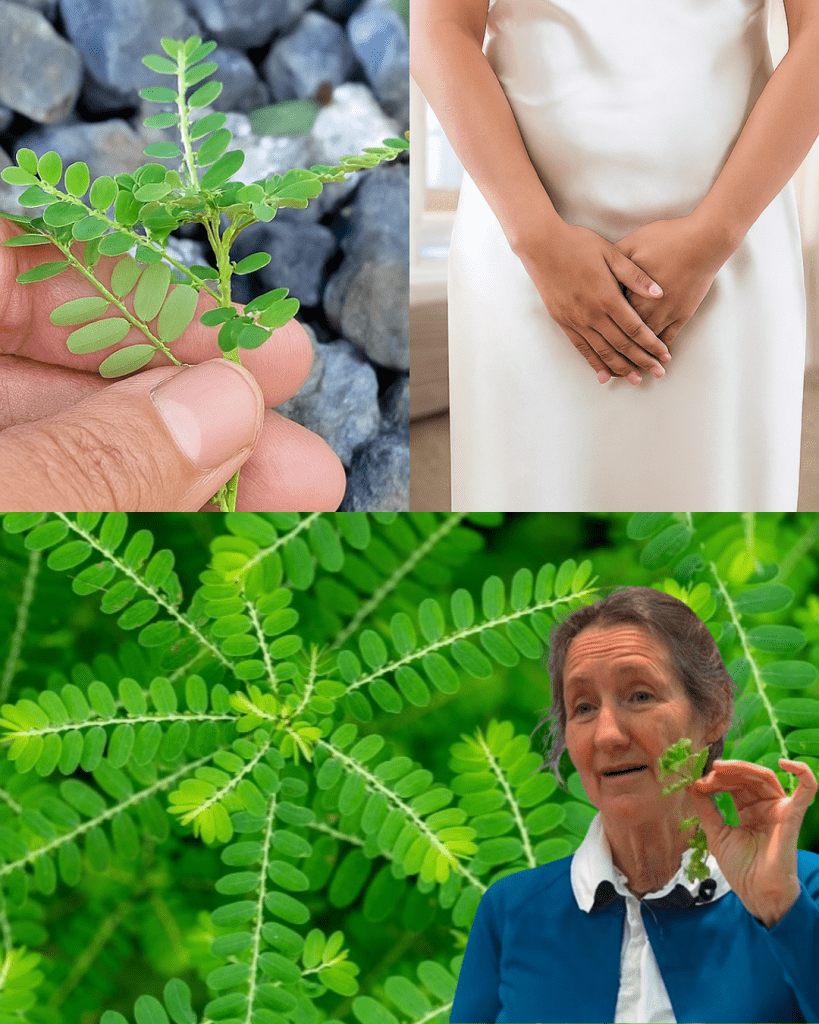🌿 Imagine a humble plant, barely two feet tall, thriving in the wild corners of tropical landscapes, yet holding secrets that could transform your health. Phyllanthus niruri, often called the “stonebreaker,” is no ordinary herb. This unassuming plant has been revered for centuries across cultures, from the rainforests of South America to the ancient healing traditions of India and China. Its vibrant green leaves and tiny, seed-filled pods hide a powerhouse of medicinal properties that modern science is only beginning to unravel. Ready to discover why this tropical marvel is capturing the attention of herbalists and researchers alike? Let’s dive into the world of Phyllanthus niruri and uncover its extraordinary potential.

A Plant with a Storied Past
Phyllanthus niruri has woven itself into the fabric of traditional medicine for over 2,000 years. Known as “chanca piedra” in South America, “bhuiamlki” in India, and “zhuzicao” in China, this herb has earned its place in the hearts of healers worldwide. Growing wild along coastal regions from Texas to South America, and flourishing in the humid soils of India and Southeast Asia, it’s a plant that thrives where life is vibrant. Its delicate, pale green flowers and smooth, light green bark give it a modest appearance, but its reputation is anything but small.
💡 In Ayurvedic medicine, practitioners have long used Phyllanthus niruri to soothe ailments like jaundice, skin disorders, and urinary issues. In Brazil, it’s a go-to remedy for kidney stones, earning its evocative nickname, “stonebreaker.” Indigenous tribes in the Amazon have relied on it to treat everything from fever to digestive woes. This plant’s global legacy sparks curiosity: what makes it so universally cherished?
The Science Behind the Stonebreaker
What sets Phyllanthus niruri apart is its rich array of bioactive compounds. Scientists have identified flavonoids, tannins, lignans, and alkaloids—each contributing to its therapeutic prowess. Quercetin, gallic acid, and geraniin are among the stars, offering antioxidant, antiviral, and anti-inflammatory effects. These compounds don’t just sound impressive; they work synergistically to support the body in remarkable ways.
🔬 Research highlights the plant’s ability to combat oxidative stress, a key driver of chronic diseases. Its antioxidants neutralize harmful free radicals, protecting cells from damage. Studies also suggest that Phyllanthus niruri may inhibit the growth of bacteria like Escherichia coli and Staphylococcus aureus, making it a natural ally against infections. But the real magic happens in its ability to target specific health challenges, from kidney stones to liver health.
Breaking Down Kidney Stones Naturally
🌟 Perhaps the most famous claim to fame for Phyllanthus niruri is its ability to tackle kidney stones. The name “stonebreaker” isn’t just poetic—it’s rooted in reality. This herb has been shown to reduce the size of urinary tract stones and prevent their formation. How? By increasing urine flow and relaxing the urinary tract, it helps flush out calcium oxalate crystals before they become problematic. A study involving 56 participants found that regular use of Phyllanthus niruri significantly reduced stone size, offering a natural alternative to invasive treatments.
For those who’ve experienced the excruciating pain of kidney stones, this plant offers hope. Its diuretic properties also promote sodium excretion, further supporting urinary health. Whether taken as a tea, capsule, or extract, Phyllanthus niruri is a gentle yet effective tool for maintaining a healthy urinary system.
A Guardian for Your Liver
🛡️ The liver, your body’s detox powerhouse, faces constant challenges in today’s world. From processed foods to environmental toxins, it’s under siege. Phyllanthus niruri steps in as a hepatoprotective hero. Its bioactive compounds, like phyllanthin and hypophyllanthin, shield the liver from damage caused by toxins like carbon tetrachloride. Studies in rats have shown that the herb can reduce liver inflammation and even protect against drug-induced liver damage.
In traditional medicine, it’s a trusted remedy for jaundice and hepatitis. While human studies are still catching up, early research suggests that Phyllanthus niruri may suppress hepatitis B virus replication by inhibiting DNA polymerase, an enzyme the virus needs to thrive. For those seeking to support liver function naturally, this herb is a compelling choice.
Beyond the Liver: A Multi-Talented Healer
Phyllanthus niruri doesn’t stop at kidney stones and liver health. Its versatility is staggering. Let’s explore its other potential benefits:
🔥 Anti-Inflammatory Powerhouse: Inflammation is at the root of many chronic conditions, from arthritis to heart disease. Phyllanthus niruri’s chloroform fraction has shown anti-inflammatory effects comparable to ibuprofen in animal studies. By calming inflammation, it may ease pain and improve overall wellness.
🩺 Blood Sugar Support: For those managing diabetes, Phyllanthus niruri offers promise. Animal studies indicate that its extracts can lower fasting blood sugar and prevent spikes, potentially aiding in diabetes management. Its antioxidant properties also help mitigate oxidative stress, a common complication in diabetes.
🦠 Antiviral and Antibacterial Ally: From herpes simplex to hepatitis B, Phyllanthus niruri has shown antiviral potential in cell studies. Its ability to inhibit bacterial growth makes it a candidate for treating infections naturally, especially in regions where access to conventional antibiotics is limited.
🌍 Immune System Booster: Traditional medicine has long used this herb to strengthen immunity. In vitro studies suggest it may enhance immune cell activity, offering potential support for conditions like tuberculosis or chronic respiratory infections.
A Natural Approach to Wellness
Incorporating Phyllanthus niruri into your routine is easier than you might think. Available in teas, capsules, tablets, and liquid extracts, it’s a versatile addition to any wellness regimen. In traditional practices, the whole plant—leaves, stems, and roots—is boiled to make a bitter yet potent tea. For those who prefer convenience, standardized supplements offer consistent dosing.
☕ How to Use It: To make a traditional tea, boil the whole plant for 20 minutes and drink small amounts (about 60ml) three times daily. Capsules and extracts are widely available, but always choose high-quality products from reputable brands to ensure purity. Consult a healthcare provider before starting, especially if you’re on medications, as the herb may interact with certain drugs.
Safety and Considerations
While Phyllanthus niruri is generally well-tolerated, caution is key. Animal studies have shown no significant toxicity, but human research is limited. Its diuretic effects could interact with medications like blood pressure drugs, and its blood sugar-lowering properties may affect diabetes treatments. Pregnant or breastfeeding individuals should avoid it due to insufficient safety data.
🩺 Always consult a doctor before adding Phyllanthus niruri to your routine, especially if you have pre-existing conditions or take medications. The lack of FDA regulation on herbal supplements means quality can vary, so read labels carefully and opt for trusted sources.

Why Phyllanthus Niruri Matters Today
In a world where synthetic drugs dominate, the allure of natural remedies like Phyllanthus niruri is undeniable. Its centuries-old use across cultures speaks to its enduring value, while modern science is beginning to validate its potential. This plant isn’t just a relic of traditional medicine—it’s a bridge to a future where nature and science work hand in hand.
🌱 For those seeking alternatives to conventional treatments, Phyllanthus niruri offers a holistic approach. Its ability to support kidney, liver, and immune health makes it a versatile ally in the quest for wellness. Whether you’re battling kidney stones, looking to protect your liver, or simply curious about natural healing, this herb invites you to explore its possibilities.
A Call to Explore Nature’s Pharmacy
Phyllanthus niruri is more than a plant—it’s a testament to the wisdom of nature. Its small stature belies a giant impact, offering hope for those seeking natural solutions to modern health challenges. As research continues to uncover its secrets, one thing is clear: the stonebreaker is here to stay.
🌟 Ready to harness the power of this tropical treasure? Start by learning more about its traditional uses and modern applications. Whether you’re sipping a cup of chanca piedra tea or exploring its supplements, you’re tapping into a legacy of healing that spans continents and centuries. Let Phyllanthus niruri inspire you to rethink wellness and embrace the gifts of the natural world.









